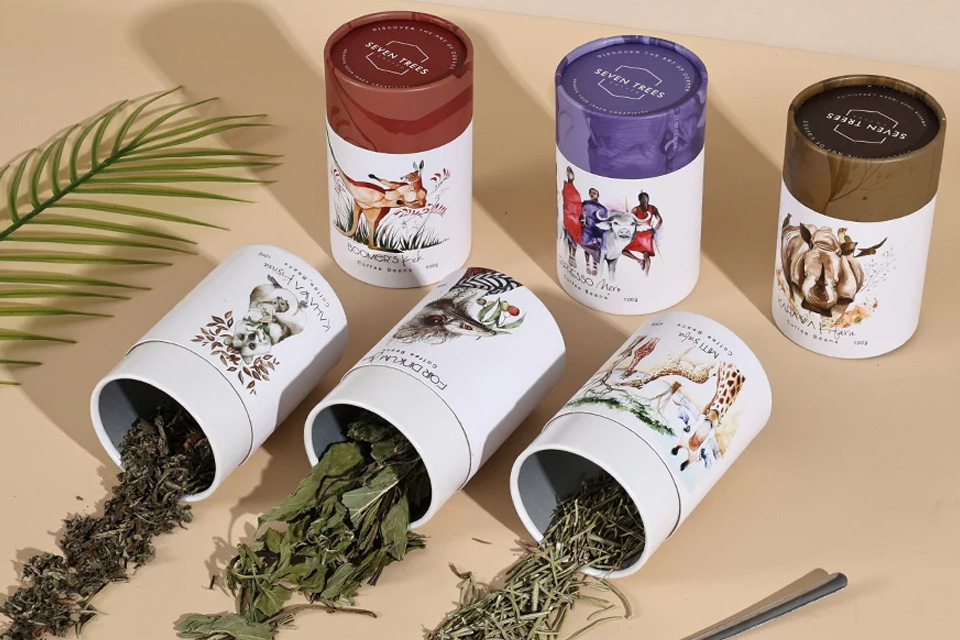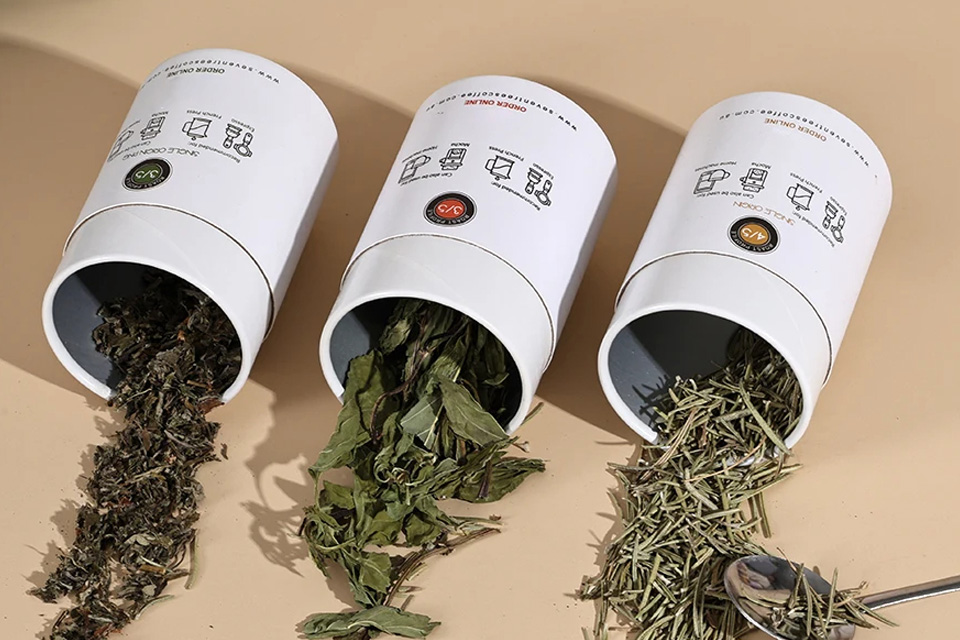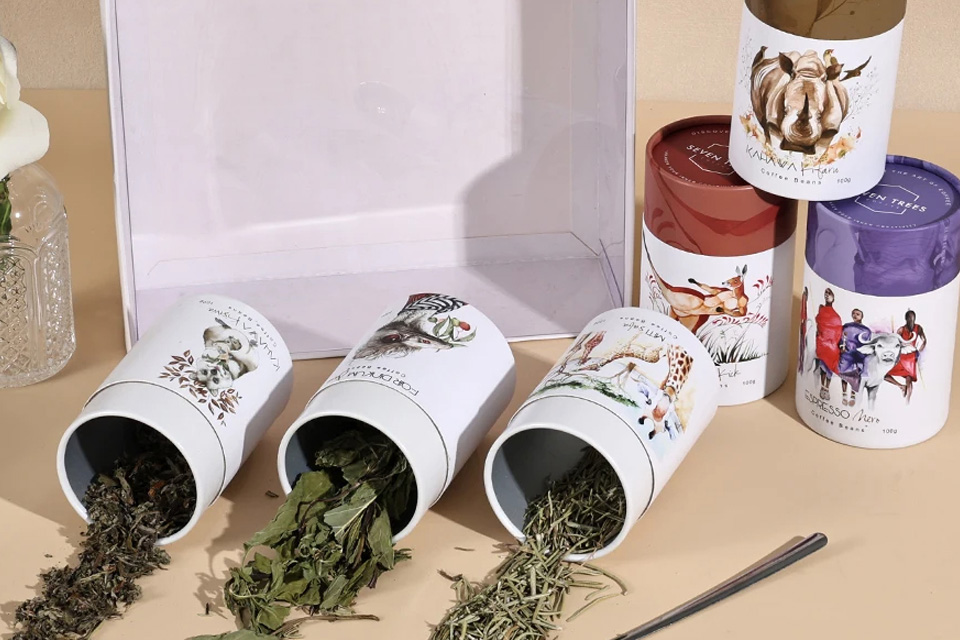The experience revolution of paper tube packaging design: the evolution from environmentally friendly containers to emotional media
Introduction
In the packaging industry landscape in 2025, paper tube packaging is reshaping the consumer experience at an annual growth rate of 18%. This cylindrical structure originated from industrial transportation has transformed from a functional container to a medium for brand and consumer dialogue. Through the integration of technological innovation and design philosophy, paper tube packaging is creating an unboxing ceremony that combines environmental value and emotional resonance - data shows that the repurchase rate of products with innovative paper tube design has increased by 27%, and the number of shares on social platforms has increased by 41%. This article will reveal how paper tube packaging reconstructs the unboxing experience through five dimensions and promotes business transformation in the era of sustainable consumption.
1. Tactile narrative of environmentally friendly materials: transformation from responsibility to brand loyalty
The core competitiveness of paper tube packaging comes from its material revolution. The bio-based paper tube developed by Colink uses a composite material of bamboo fiber and mycelium, which reduces carbon emissions by 63% compared with traditional corrugated paper. The unique texture of this material forms a natural concave and convex touch of 0.8-1.2mm, awakening the original memory of natural materials at the fingertips of consumers.
Case studies:
- The 90% paper bottle designed by Diageo for Johnnie Walker Whisky has pine essential oil microcapsules implanted on the surface, which releases the scent of fir forest when unpacking, integrating the tactile and olfactory experience.
- The six-pack paper tube handle of Martin beer is made of unbleached raw pulp paper. The rough texture forms an intertextual relationship with the craft aesthetics of craft beer, which increases the product's premium ability by 19%.
This "perceivable sustainability" strategy transforms environmental protection commitments from abstract concepts into concrete experiences. According to the Global Packaging Trends Report, 72% of consumers are willing to pay a premium for environmentally friendly packaging with tactile innovation.
2. Interactive revolution of structural innovation: gamification reconstruction of the unboxing process
The cylindrical shape of paper tube packaging breaks through the physical limitations of square containers and gives rise to three types of experience-enhancing designs:
- Spiral unlocking system: For example, the cosmetics set designed by PA Consulting, the outer layer of the paper tube can be rotated to gradually reveal the gold foil liner, turning the unboxing into a treasure hunt game
- Modular assembly: The stationery set of Danish brand Flying Tiger, 6 paper tube units are freely combined into a pen holder or desk lamp holder through magnetic buckles, and the reuse rate is increased to 83%
- Temperature control function integration: cold chain drug packaging uses phase change energy storage paper tubes, and the surface temperature sensing color blocks display the storage and transportation status in real time, reducing the transportation damage rate by 42%
These designs transform functional needs into emotional touchpoints. User tests show that for paper tube packaging with interactive structures, customers can disassemble it 2.3 times longer and the memory retention rate is increased by 58%.
3. Localized translation of cultural symbols: transformation from universal container to emotional carrier
Paper tube packaging is becoming a new medium for regional cultural communication. The "Tea Ceremony Paper Tube" launched by Japanese designer Naoto Fukasawa has a tea whisk texture embossed on the surface and matcha powder coated on the inner wall. When unpacking, the seal needs to be torn off at a specific angle to restore the ritual sense of "one-time meeting" in the tea ceremony. This design has increased the penetration rate of traditional tea products among young consumer groups by 37%.
Localized innovation paradigm:
- The Mid-Autumn Festival gift box in Jiangsu and Zhejiang regions designs the paper tube as a lantern skeleton, and the Suzhou embroidery pattern on the surface presents a dynamic moon phase in a light-transmitting state
- The Nordic minimalist style paper tube adopts cold-pressed relief technology, and the monochrome lines outline the silhouette of the reindeer, which together with the FSC certification logo builds a sustainable trust symbol
This cultural translation strategy has upgraded the paper tube packaging from a physical container to a cultural narrative carrier. According to data from JD Consumer Research Institute, the search volume of paper tube packaging products with regional cultural elements increased by 214% year-on-year.
4. Immersive integration of smart technology: the digital twin era of paper tube packaging
The technological breakthroughs of paper tube packaging in 2025 are concentrated in two dimensions:
-
AR augmented reality: Scanning the Hug-IT paper tube sleeve can trigger the 3D product theater, and users can observe the hanging cup shape of whiskey at 360°
-
IoT sensing system: PulPac's smart paper tube has a built-in humidity sensor, and the data is synchronized to the mobile phone APP to guide the storage environment, extending the shelf life of food by 23%
More revolutionary innovation comes from Diageo's "paper tube blockchain" - each paper tube is given a unique digital ID, and consumers can trace the full life cycle data from bamboo planting to carbon footprint. This transparent narrative has increased the brand trust index by 31%.
5. Sustainable closed-loop experience design: from single use to value continuation
Leading companies are building a full-cycle experience system for paper tube packaging:
- Production end: Colink's "ion wind static elimination technology" makes the cleanliness of paper tube recycling reach food grade standards, reducing the reuse cost by 56%
- Use end: Starbucks Christmas paper tube cup sleeves can be disassembled into jigsaw puzzles, and the supporting APP provides 20 DIY tutorials
- Recycling end: Cainiao Station has set up a paper tube transformation workshop, and consumers can use old paper tubes to exchange for limited edition seed blind boxes
This "creation-use-regeneration" closed loop has expanded the life cycle value of paper tube packaging by 4.2 times. The practice of L'Oréal Group shows that the customer retention rate of the closed-loop system is 41% higher than that of traditional packaging.
Conclusion
The innovative essence of paper tube packaging is the reconstruction of consumer experience - transforming environmental responsibility into perceptible temperature, upgrading the unboxing action to a cultural ritual, and evolving the transport container into a digital interactive interface. In 2025, when ESG investment grows by 300%, brands that can integrate technological innovation, local culture, and sustainable values into paper tube design are winning the "mind share" of Generation Z. This packaging revolution proves that when the physical form of the cylinder is injected with the humanistic core, the simplest material can also create the most lasting commercial value.
Authoritative citation source
FSC Forest Certification System
2025 Global Packaging Trend White Paper
PulPac Dry Molded Fiber Technology
 English
English Español
Español Português
Português Pусский
Pусский Français
Français Deutsch
Deutsch 日本語
日本語 한국어
한국어 Italiano
Italiano عربى
عربى


